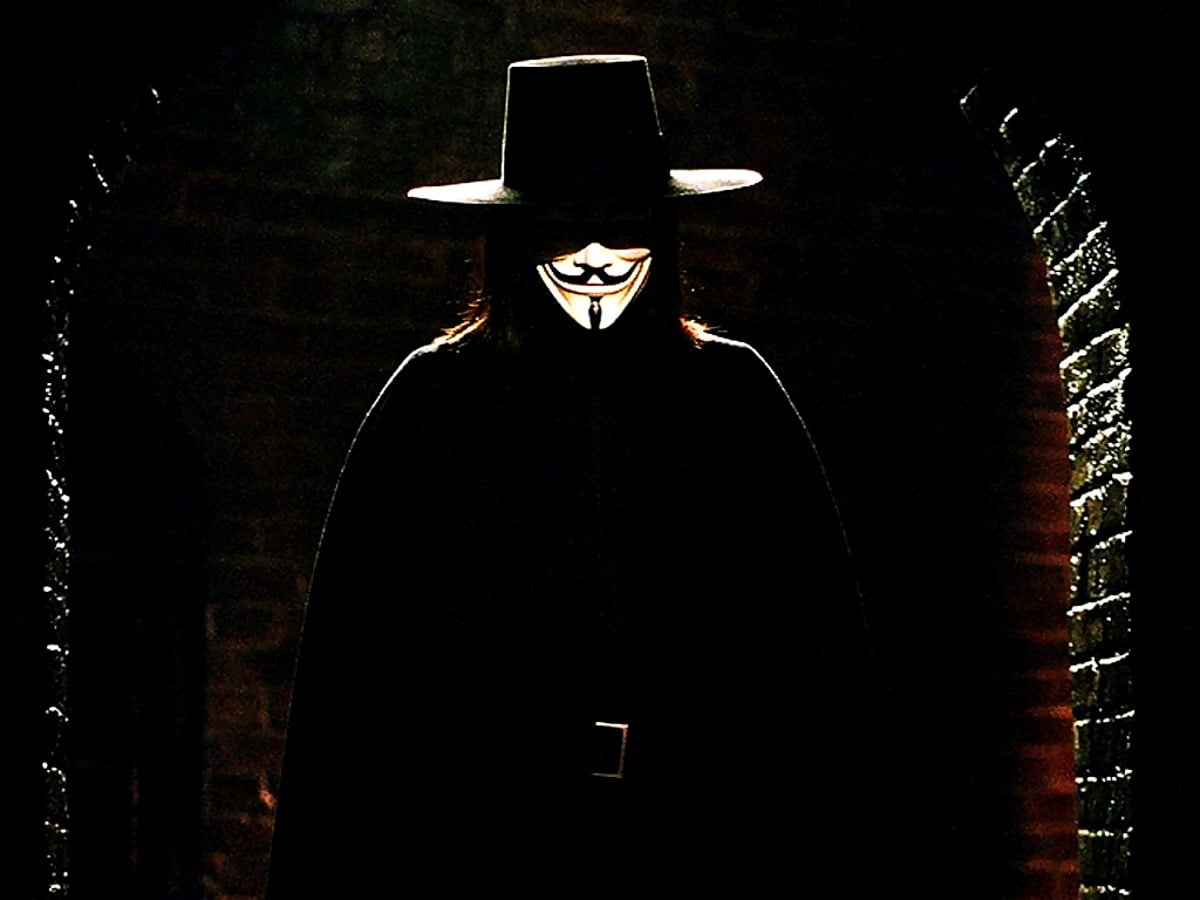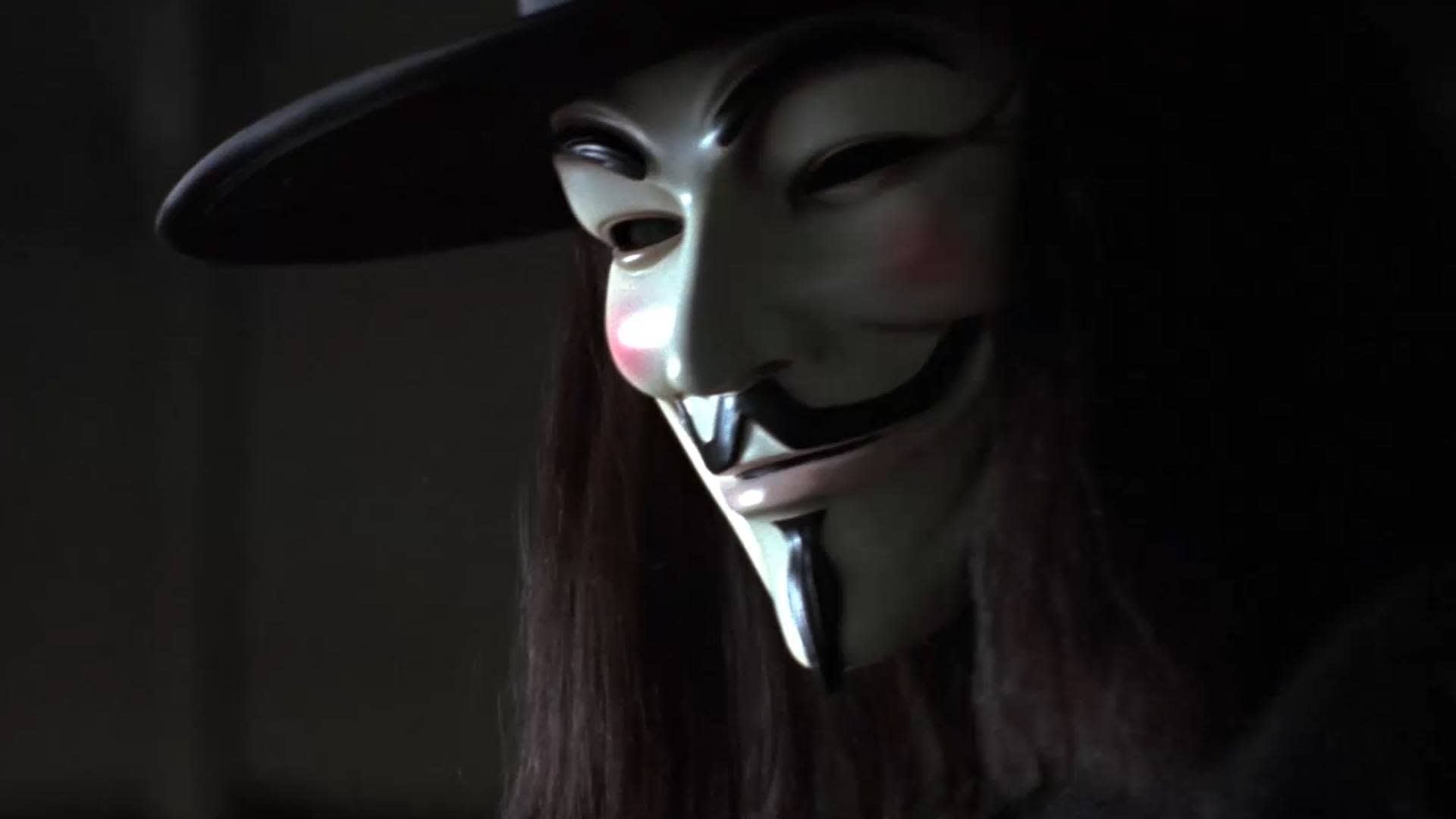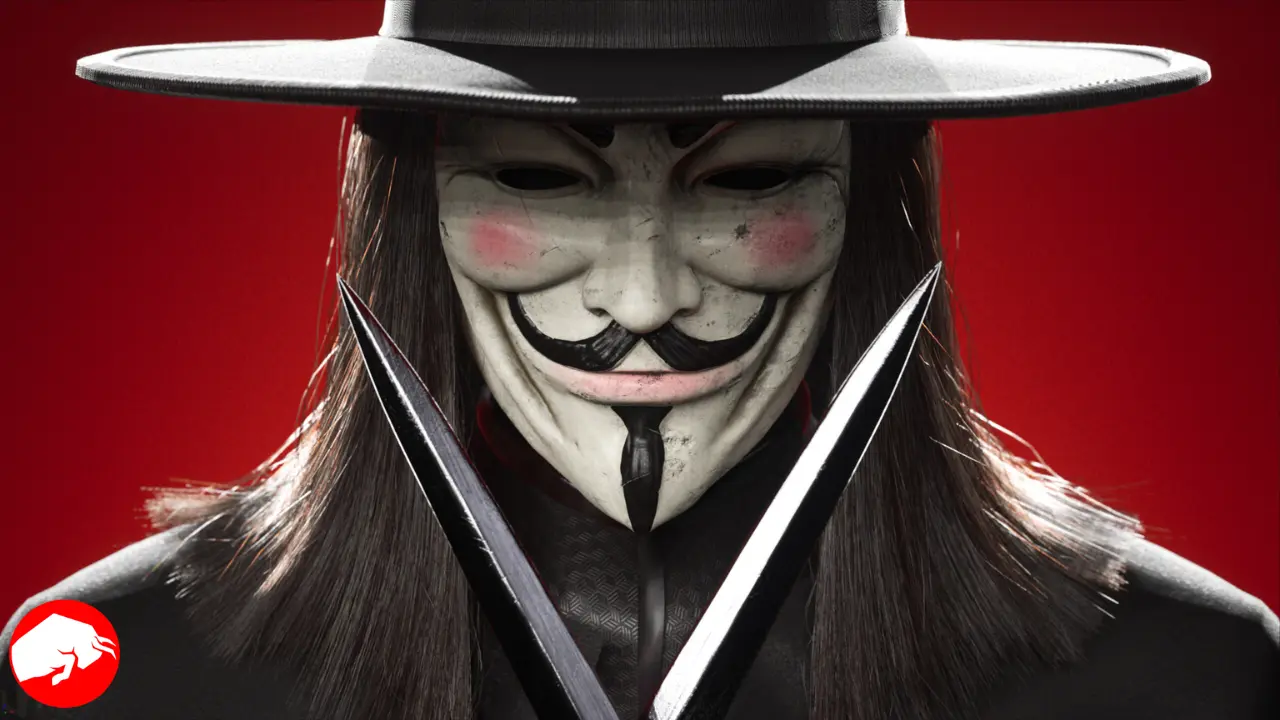“V for Vendetta,” a thought-provoking dystopian political action film, hit the screens in 2005, stirring the minds and hearts of audiences worldwide. The narrative, set in a future where a fascist totalitarian regime dominates the UK, revolves around V, an enigmatic anarchist freedom-fighter. It delves into themes of authoritarianism, individuality, and the power of ideas, offering an exploration of a dystopian world where freedom becomes an act of rebellion.
Unraveling the Origins of ‘V for Vendetta’

“V for Vendetta” is a work of fiction that was originally created as a comic book series by Alan Moore and David Lloyd. First published by DC Vertigo Comics in 1988, the story is not based on real historical events or true incidents. While the narrative incorporates elements inspired by historical references, such as the use of the Guy Fawkes mask and allusions to the Gunpowder Plot of 1605, it is fundamentally a product of the author’s imagination.
Cinematic Portrayal of Dystopia
The film adaptation of “V for Vendetta,” directed by James McTeigue and released in 2005, was brought to life through filming in various locations. The production took place predominantly in Germany and the United Kingdom. These locations were chosen strategically to visually capture the dystopian world depicted in the story.
‘V FOR VENDETTA’ releases on Max on July 1.
See what other movies are coming soon to Max: https://t.co/hRQzvYDbAC pic.twitter.com/SpFPmUhioV
— DiscussingFilm (@DiscussingFilm) June 23, 2023
Stellar Cast Shines in ‘V for Vendetta’
The cast of “V for Vendetta” features a talented ensemble of actors who brought the characters from the graphic novel to life on the big screen. Natalie Portman portrays Evey Hammond, a character who becomes entangled in the efforts of the masked freedom-fighter V, played by Hugo Weaving. Stephen Rea takes on the role of Eric Finch, the Chief Inspector of New Scotland Yard who leads the investigation into V’s activities.
‘V for Vendetta’ Plot Overview
Set in a dystopian future, the UK is under the rule of the Norsefire political party, a fascist regime led by High Chancellor Adam Sutler. The government uses propaganda and brutality to maintain control, targeting immigrants, homosexuals, and those with alternative beliefs.
Evey Hammond’s life changes after encountering the masked vigilante “V.” Rescued from an assault by the secret police, Evey learns of V’s plan for revolution against the Norsefire regime. V’s vendetta is fueled by a personal grudge against the government, which had subjected him to experimentation and torture.
V’s campaign begins with the destruction of the Old Bailey courthouse, broadcasting a message urging citizens to rise against oppression and join him on Guy Fawkes Night outside the Houses of Parliament. Evey becomes entangled in V’s mission, aiding him in his quest for justice.
Targeting key figures of the Norsefire regime, V takes down Lewis Prothero, a propaganda broadcaster, and Bishop Lilliman, who abuses his power. Evey learns about V’s tragic connection to the regime’s crimes, including the creation of the “St. Mary’s Virus.”

Chief Inspector Eric Finch uncovers the government’s secrets, including the origins of the virus. Evey undergoes a transformative journey, understanding V’s quest for freedom and justice.
As the narrative unfolds, Evey and V’s paths intertwine, leading to a climactic confrontation with corrupt authorities. V’s goal is to inspire the people to rise against tyranny. On Guy Fawkes Night, V’s plan culminates in a massive uprising and destruction of the Houses of Parliament.
In the end, V’s actions spark a revolt against the oppressive regime. Chaos ensues as citizens don the Guy Fawkes masks, and V’s legacy lives on as a symbol of resistance and the fight for individual freedom.
“V for Vendetta” explores themes of totalitarianism, government control, individuality, and the power of ideas. Weaving action, suspense, and social commentary, the story provides a compelling look into a dark dystopian society where resistance is an act of courage.










